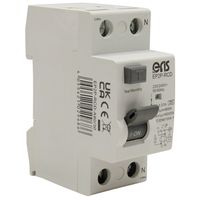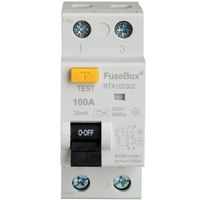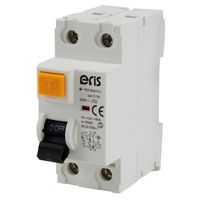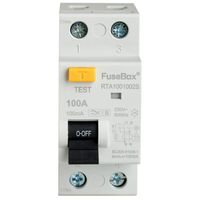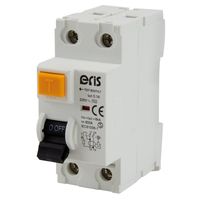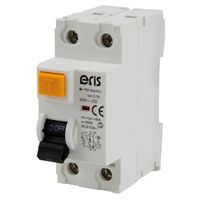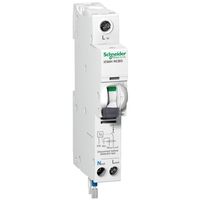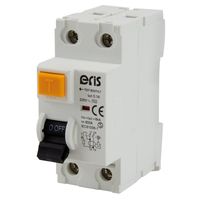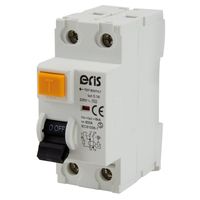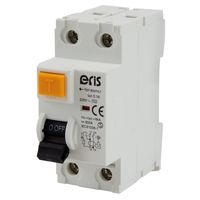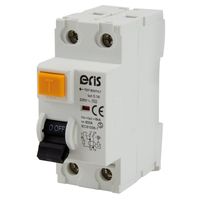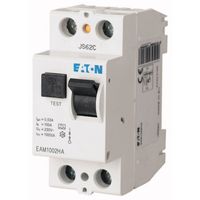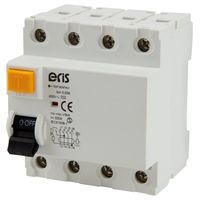RCDs (Residual Current Devices)
An RCD (Residual Current Device) constantly monitors the flow of electrical current in a circuit to provide protection from electric shocks and fire. Fixed RCD protection is a necessity for electrical equipment across both commercial and domestic units. An RCD quickly cuts off power in the event of a current leakage, preventing electric shocks and potential fatalities.
Here at YESSS Electrical, we supply an extensive range of RCDs. Choose from a variety of breaking capacities, current ratings, leading brands and more. Here is a selection of our most popular RCDs:
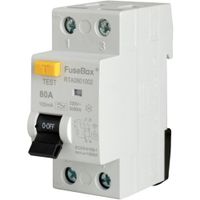
80A RCD, 2 Pole, Type A, 100mA, 10kA
FAQs
How does an RCD work?
An RCD works by detecting any imbalance between the outgoing and incoming total current of a given number of circuits. If an imbalance is found, the RCD trips out or cuts off the power supply to the electrical circuit to prevent electric shock injuries or fire as a result of electric current leakage.
It works on the very simple principle that if there is a difference in the electricity current coming in against that which is going out, then it must have gone somewhere.
An RCD is typically located inside a consumer unit or fuse board.
What type of protection does an RCD provide?
An RCD offers multiple layers of protection against electric shocks and fires. Firstly, it provides personal protection by preventing reducing the risk of serious electrical shock or injury, and offers fire protection by swiftly identifying electrical faults that might lead to fires.
Whether it's insulation breakdown or a short circuit, the RCD detects abnormal current flow and swiftly trips the circuit, averting the danger of overheating and potential fire hazards. Installed in electrical panels or individual sockets, RCDs play a critical role in safeguarding people, property and preventing accidents caused by electrical faults.
What are the benefits of using an RCD?
Using an RCD offers enhanced safety by quickly cutting off power in the event of a current leakage, preventing electric shocks and potential fatalities.
Particularly beneficial in environments with electric shock risks, such as construction sites or homes with young children or elderly individuals, RCDs significantly reduce the chances of severe shocks. They also detect electrical faults that could lead to fires, tripping the circuit to prevent overheating and potential hazards.
In addition to complying with electrical regulations, RCDs provide peace of mind, offering reliable protection for people and property. Easy to install and cost-effective, RCDs are an essential addition to any electrical system, ensuring continuous safety.
What type of environment can an RCD be used in?
RCDs are commonly installed in residential buildings, commercial establishments, construction sites, industrial settings, and outdoor environments.
In homes, RCDs protect against electric shocks and fires, while in commercial buildings, they ensure the safety of employees and customers. Construction sites require RCDs to meet safety regulations and protect workers from electrical hazards.
Industries benefit from RCDs to safeguard workers and equipment, while outdoor environments use them to prevent water-induced electrical shocks. It's essential to consult with experts familiar with local regulations to ensure proper installation and compliance with electrical codes.
What is the lifespan of a Residual Current Device?
The lifespan of an RCD depends on factors like usage, environmental conditions, and manufacturer recommendations. Manufacturers provide estimated lifespans or replacement intervals for their devices, and following their guidance is advisable.
Regulatory standards may also dictate when RCDs should be replaced, such as every 20 years for domestic installations and every 10 years for commercial and industrial installations in the UK.
Regular maintenance and testing are crucial to ensure proper functioning, and any faults or malfunctions may require replacement or repair.
The lifespan of an RCD is determined by its ability to detect electrical faults effectively, and adherence to maintenance and recommendations is key for ongoing reliability and safety.
What is the difference between an RCBO and a RCD?
An RCBO (Residual Current Circuit Breakers with Overcurrent Protection) and an RCD (Residual Current Device) are electrical safety devices with differences in functionality. An RCD detects imbalances in electrical currents, disconnecting power if a leakage or difference is detected to prevent electric shocks.
However, an RCBO combines the functions of an RCD and a circuit breaker, offering both residual current protection and overcurrent protection in a single device.
This allows it to detect and protect against overloads and short circuits, in addition to providing protection against electrical shocks.


